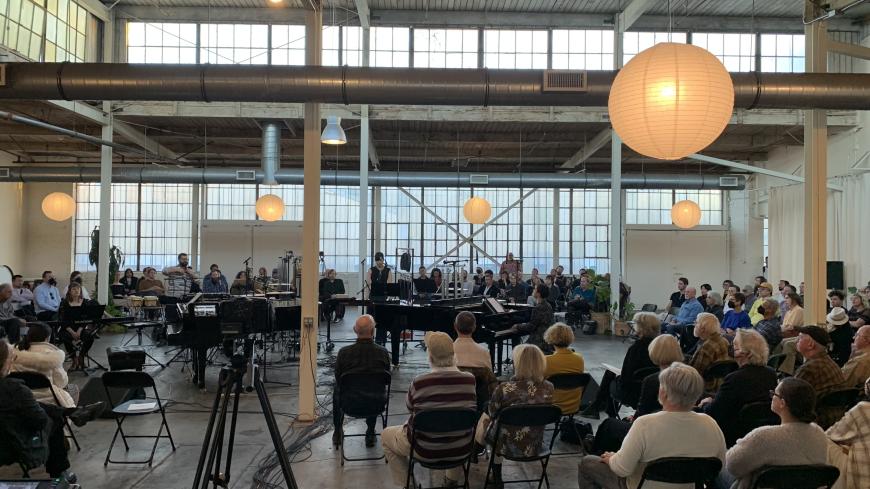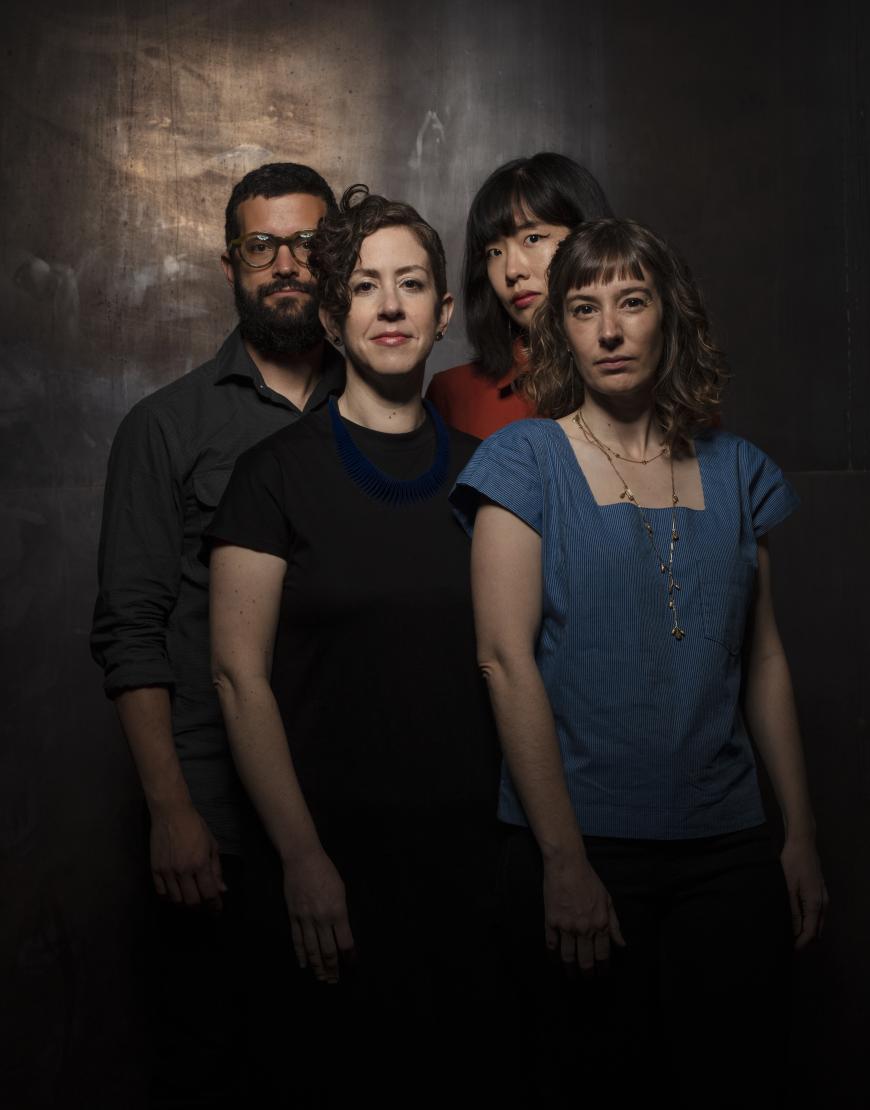
Frankie Los Angeles, where the lauded piano and percussion ensemble Yarn/Wire played two performances on Dec. 9 for Monday Evening Concerts, is an unusual venue for a classical concert. The main space is 6,450 square feet, with high ceilings and concrete floors. It’s a place to see and be seen. As the large central chamber began to fill with a fashionable audience on Saturday afternoon — a passerby could be forgiven for mistaking concertgoers for the space’s typical gallery crowd — pairs and groups stole furtive glances at each other across the central stage.
But as Yarn/Wire took the stage, these glances turned upward to the space’s airy, irregular rafters and high windows, as if to follow the trajectory of sounds which hung, slunk, and bounded around the venue’s live acoustic.
It’s easy to forget about the traditional optics of concertgoing when one is experiencing some of the most vital and original programming that Los Angeles has seen this season. At Frankie, Yarn/Wire presented two fully distinct programs, developed in consultation with MEC Artistic Director Jonathan Hepfer, that exhibited different aspects of this quartet’s mastery.

To be sure, all five works performed on Saturday (four in their West Coast premieres) were fiendishly demanding, executed with precision and flair. But while the afternoon concert demonstrated Yarn/Wire’s sonic and technical limits in what felt like a virtuosic recital, the evening concert, which featured two larger works, showcased the group’s ability to create more immersive encounters.
From the afternoon program’s opening moments, it quickly became clear that Yarn/Wire can make sounds that other percussion ensembles simply cannot. In the first section of Tyondai Braxton’s Music for ensemble and pitch shifter/delay, sustained resonance began to emerge, as if spontaneously, from an assemblage of repeated rhythmic elements. When the resonance returned, percussionist Russell Greenberg’s glockenspiel figures combined with the pitch shifter to add an almost feverish brilliance to the sound.
In Sarah Davichi’s Feedback Studies for Percussion, resonance emerged from delicacy instead of fray. Yarn/Wire produced a truly remarkable array of rolling, rumbling, screeching, and scraping textures. At a certain point, it became satisfyingly difficult to discern which instrument was responsible for which sound — parts appeared to rise from an inexplicable composite, and they echoed tenderly in the air above the group. Rapt audience members seemed upset at themselves for any accidental noises caused by rustling programs or the squeaking of low-slung folding chairs.
Andrew McIntosh’s Little Jimmy, which closed the afternoon concert, reinforced the ensemble’s mastery of diverse sonic worlds. Attack-driven passages in the first and third movements rang out brightly but never harshly, led by pianist Laura Barger’s irrepressible and unfailingly precise rhythmic energy. Meanwhile, bowed bells, marimba, and cymbals interacted tenderly with field-recorded birdsong.
Little Jimmy’s scope presaged the evening program’s focus on longer musical journeys. In Klaus Lang’s molten trees, the group vivified an abstract and prickly work. Barger and fellow pianist Julia Den Boer’s insistent woodblock strikes created rhythmic tension and were an evocative handhold in considering Lang’s philosophy of “music as time made manifest.” Meanwhile, gentle textures, like percussionist Sae Hashimoto’s deft timpani rolls, rose and faded, creating more longitudinal tension and release.
In Sarah Hennies’s Primers, time was marked instead by powerful contrasts between silence and noise, between gentle ebbs and flows and complicated rhythmic overlays. Hashimoto and Greenberg took impressive charge of the dynamic energy during the busiest sections. Meanwhile, Den Boer’s inventive touch in crashing piano gestures dominated many of the piece’s emptier stretches, the resulting resonance hanging in the air.
As the last reverberations of Hennies’s work fell to earth, so, too, did people’s gazes. Now, though, they were fixed on the altar of percussion instruments that just moments before had been brought so vividly to life. As a portion of the audience rose for a post-concert conversation or to meet their Uber drivers, another remained frozen in place, unsure if they were ready to reenter the world outside this sonic experience. And as I sat with the latter crowd, I was happy — that is what a good concert can do.




